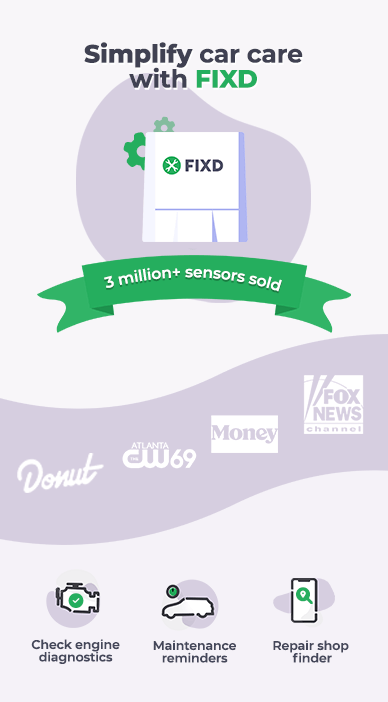The Average Cost to Replace Struts at a Mechanic is $742 to $826. The Average Strut Replacement Labor Cost Is $197 to $248, Which You Can Save if You DIY.
This price range is based on national averages for all vehicles and does not factor in taxes, fees, or your particular make and model. Related repairs or maintenance may also be needed such as a front or rear coil spring, top strut mount, or sway bar link replacements. For a more accurate estimate based on your make, model, and location, use the RepairPal Fair Price Estimator.
Cost at the Mechanic: $742 to $826
Parts: $545-$578
Labor: $197–$248
When it comes to cost, parts should be the bigger expense than the strut replacement labor cost. The price of the replacement struts will mostly depend on the type of vehicle you have. Having to get new struts for just one pair versus all four wheels will affect the price of the service, too. Keep in mind that certified technicians usually charge a bit more for their labor, especially for upper-end makes.
Cost to DIY: $545-$578
Difficulty Level: Intermediate
Parts Needed:
- Your model-appropriate replacement suspension struts
- Car jacks and jack stands
- A spring compressor if your vehicle’s struts have springs
This kind of job will require getting your hands a little dirty and going under your car, but it’s not that difficult. The only expense of a DIY strut replacement is the cost of the new part, so you could save money by doing it yourself. As long as you take your time, use proper safety precautions for jacking and dropping the vehicle, and safely remove any strut springs with a compressor (if required), you can do it on your own.
What Is Strut Replacement?
“Shocks” and “struts” are commonly used interchangeably, but these two suspension pieces are quite different. While a shock absorber is a gas-filled cylinder and piston used to reduce suspension bounce, a strut implements a coil spring and shock absorber into a single suspension component that offers a more compact design. The most common type of strut is the MacPherson strut design, which generally attaches to the vehicle body/chassis, lower control arm, and the steering tie rod end.
Struts are essential to preventing wobbling and vibrations, both in the cabin and your steering wheel. Over time, they will weaken and become less effective. For the sake of comfort and eventually safety, it’s important to remove your car’s old struts and install properly fitting new ones.
Unless you are replacing a strut due to physical damage, you usually replace struts in pairs, or do all four at once if the vehicle has struts at each wheel. Most replacement struts come preassembled so you don’t need to swap the old coil spring onto the new strut. This makes strut replacement very easy, although this job is still generally not as easy as replacing shock absorbers.
What Does a Strut Replacement Include?
Strut replacements take about one to two hours. A mechanic might include a warranty and general safety inspection with any suspension part replacement labor. Going the DIY route, you can forget about the strut replacement labor cost entirely. All you really need is to buy the replacement struts and the tools necessary to lift your vehicle. Then, you lift your car, remove the old strut, put on the new one, and repeat for at least the other side.
Having a healthy suspension on all your wheels will keep wear and tear to a minimum, saving you money in the long run. To that end, it’s important to look up what kinds of struts will fit your vehicle and choose ones that are high quality.
What Happens If You Don’t Replace Your Struts?
If you’ve ever driven a vehicle that has an extremely worn suspension, you understand how much of a difference these components make. The forces of a vehicle rolling along, turning, and braking, even at low speeds, can cause intense vibrations or shakes. As struts get older and less effective at cushioning the wheels, the car will wobble and bump more aggressively, which will become distracting and uncomfortable.
It’s common for people to not think about strut replacement until their vehicle feels noticeably worse on the road, but it pays to notice it sooner. Because the wheels can’t work effectively while bumping around, the excessive shaking compromises handling, stopping power, and tire life.
How Often To Get Strut Replacement
For the average car, struts should be replaced every 50,000 to 100,000 miles. Vehicles that do more off-roading or intensive driving might need replacement struts sooner. Different cars have different designs, which might affect the rules about when to replace the struts. As long as both fronts and/or both rears are changed together, and you follow general recommended windows to replace them, your car’s suspension should be fine.
Disclaimer: You can look up the specific model of struts that your vehicle uses and get an identical replacement. This will ensure quality and long-term performance. Above all else, follow the instructions in your owner’s manual.
Common Symptoms That You Need To Replace Your Suspension Struts
- An excessively bumpy ride
- Knocking, thumping, or rattling sounds
- Front- or rear-end dipping while braking or accelerating
- Excessive body roll during turns
- Tire cupping
- Tires wearing down faster than normal
- Hydraulic fluid leakage
Related Maintenance Services
- Front coil spring replacement
- Rear coil spring replacement
- Top strut mount replacement
- Sway bar link replacement
Never Miss Important Maintenance Again With FIXD
If you have some experience working underneath cars and taking out parts, changing multiple struts should only take a couple of hours. However, if you have your struts wearing down a bit sooner than the typical 50,000-100,000-mile range, there may be other issues with the suspension or other components.
Keep in mind that some problems with other systems in your car can also affect the suspension. You can find them in seconds by plugging in the FIXD Sensor. See if your frequent strut replacements are being caused by other issues and solve them in your garage for less money. FIXD takes the stress out of car care in every way imaginable. It sends automated reminders for upcoming maintenance or service tasks to your phone so you never miss a fluid change or engine tune-up again.

At FIXD, our mission is to make car ownership as simple, easy, and affordable as possible. Our research team utilizes the latest automotive data and insights to create tools and resources that help drivers get peace of mind and save money over the life of their car.












